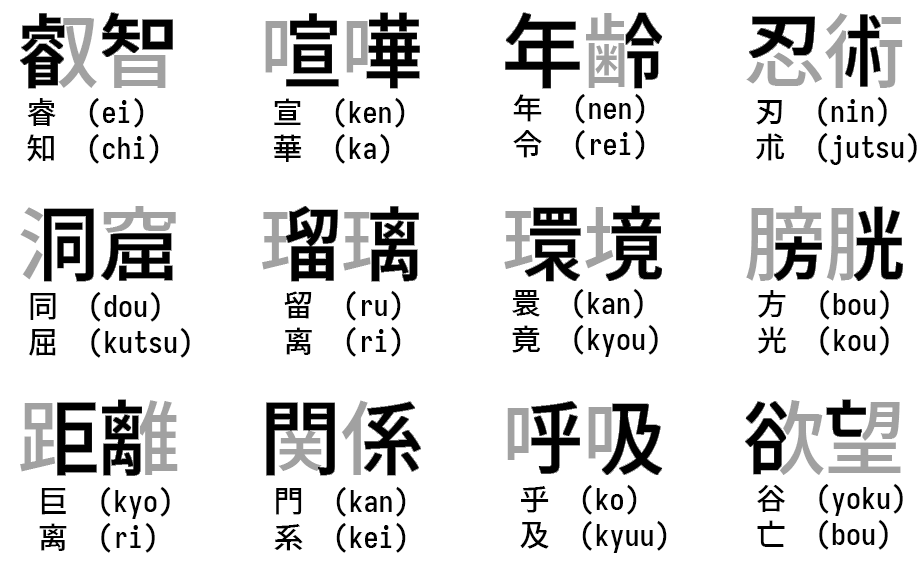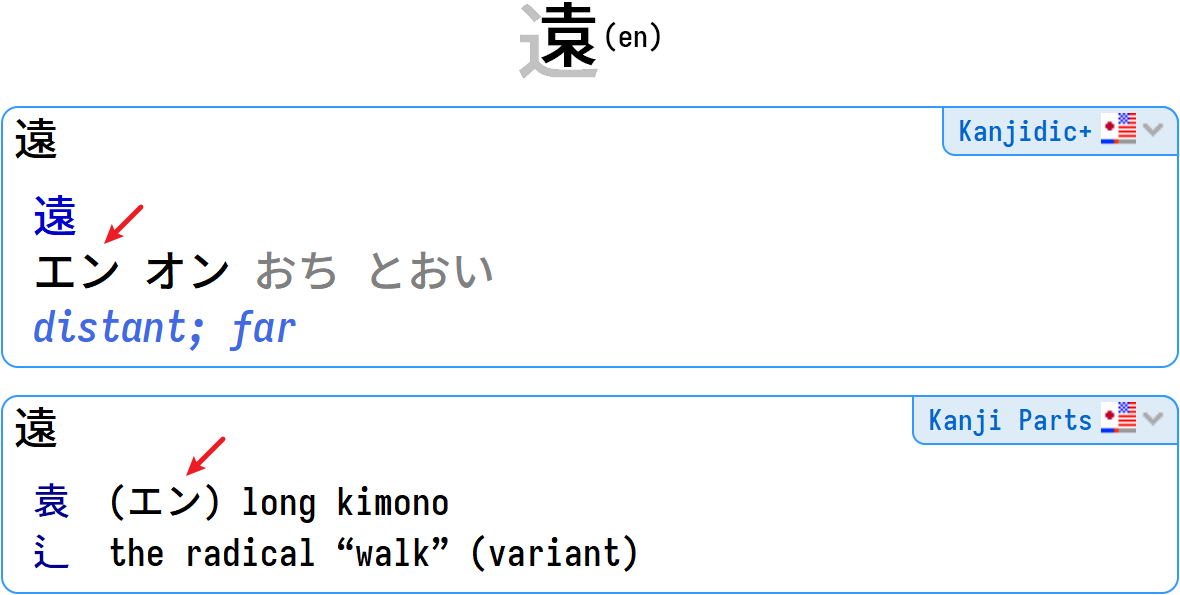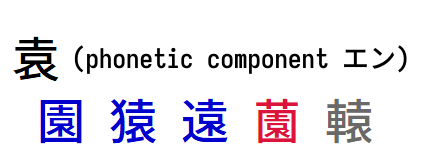Phonetics
Mastering the reading of kanji can be very tricky. This is due to the lack of well-defined rules in the language for choosing the correct reading for each kanji inside every word. In most cases, kanji will borrow their readings from their listed on'yomi readings, but there are several cases in which they will borrow their readings from their kun'yomi readings, or sometimes even borrow from their original, ancient Chinese readings. It's completely arbitrary, and even natives struggle with this while learning the language.
But did you know there's a reliable method you can count on to correctly guess the reading of every new kanji you can find? So far you've learned that every kanji is made of radicals, components or even other kanji, and these
lend the form to the kanji. But there are special components inside most kanji that also
lend their readings to them. They're called
phonetic components.

Once you learn to identify the phonetic inside each kanji, you'll never forget its reading again. Moreover, it's
highly probable that that kanji will have that same reading the next time it appears in a different word. In the example below, the component
袁 is the one "lending" the reading "EN"
エン to the kanji
遠:

To illustrate, ALL the kanji below can be read as "EN" (エン) due to having the same phonetic component:

Similarly, all the kanji below can be read as "KOU" (コウ) due to the same phonetic component:

All the kanji below can be read as "KIN" (キン) due to the same phonetic component:

All the kanji below can be read as "YU" (ユ) due to the same phonetic component:

All the kanji below can be read as "MAN" (マン):

All the kanji below can be read as "SOU" (ソウ):

All the kanji below can be read as "KYOU" (キョウ):

All the kanji below can be read as "KEN" (ケン):

Remember that this isn't a rule, and some kanji can and will assume a variety of random readings regardless of their components.
But the good news is:
all kanji and hanzi dictionaries come with ALL phonetic readings conveniently identified and ready for you to start practicing. The majority of existing kanji use phonetic readings (the more complex they get, the more they rely on phonetics), and using this method will speed up your learning curve for reading kanji considerably.